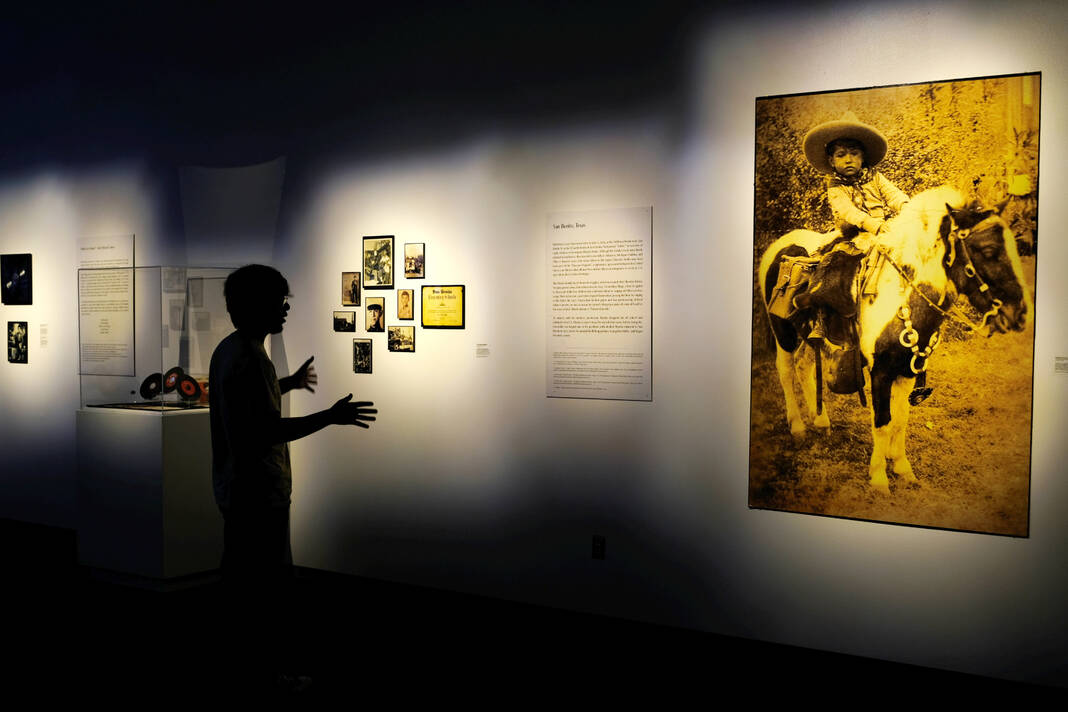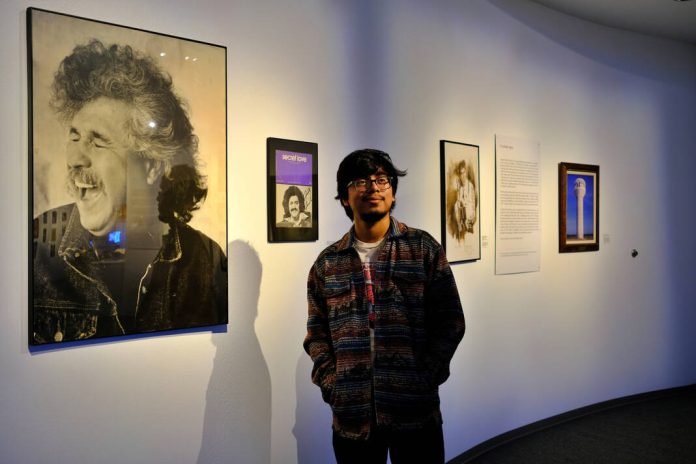
|
Only have a minute? Listen instead
Getting your Trinity Audio player ready...
|
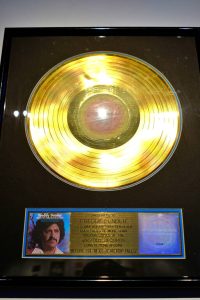
SAN BENITO — For Evangelina Huerta, Freddy Fender’s legacy is coming alive in the biggest exhibit immortalizing the hometown legend.
Across 5,000 square feet, the San Benito Cultural Heritage Museum is showcasing “Freddy Fender: Celebrating the Life and Legacy of Baldemar Huerta,” the museum’s first exhibit honoring the local nightclub singer who became a three-time Grammy Award-winner whose star rose into film.
“It means everything to me,” Huerta said Thursday. “It’s honoring Freddy. It means giving Freddy life. It gives him life again. I don’t want anyone to forget Freddy.”
The exhibit, which opened Thursday and runs through Nov. 9, marks the first time Huerta has presented her estate before the public.
“What we’re putting together is a culmination of his life,” she said.
Nearly 18 years after his death, the show marks the museum’s first exhibit memorializing the hometown hero, Adeida Garcia, the museum’s director, said.
“This is a monumental achievement,” Garcia, the exhibit’s co-curator, said. “It’s a dream come true — we were able to bring this dream to San Benito. To bring this to fruition is amazing. He remains relevant. I know this exhibit is going to touch a lot of our community and the RGV community.”
Since 2016, curator Veronique Medrano has been researching Fender’s life, working with Huerta to showcase artifacts and memorabilia filling more than two rooms in the family home in Corpus Christi.
“We want to showcase the fullness of his career, from when he was a kid to the end of his career,” said Medrano, a Brownsville-born Tejano singer with four albums who’s driving a movement aimed at recognizing Fender’s work and impact as the first Mexican-American artist, songwriter, actor and influencer across genres including pop, Tejano, country and rock.
“It’s a very impressive collection,” she said. “Just putting him in a museum allows for a huge touch-point I don’t think has happened before.”
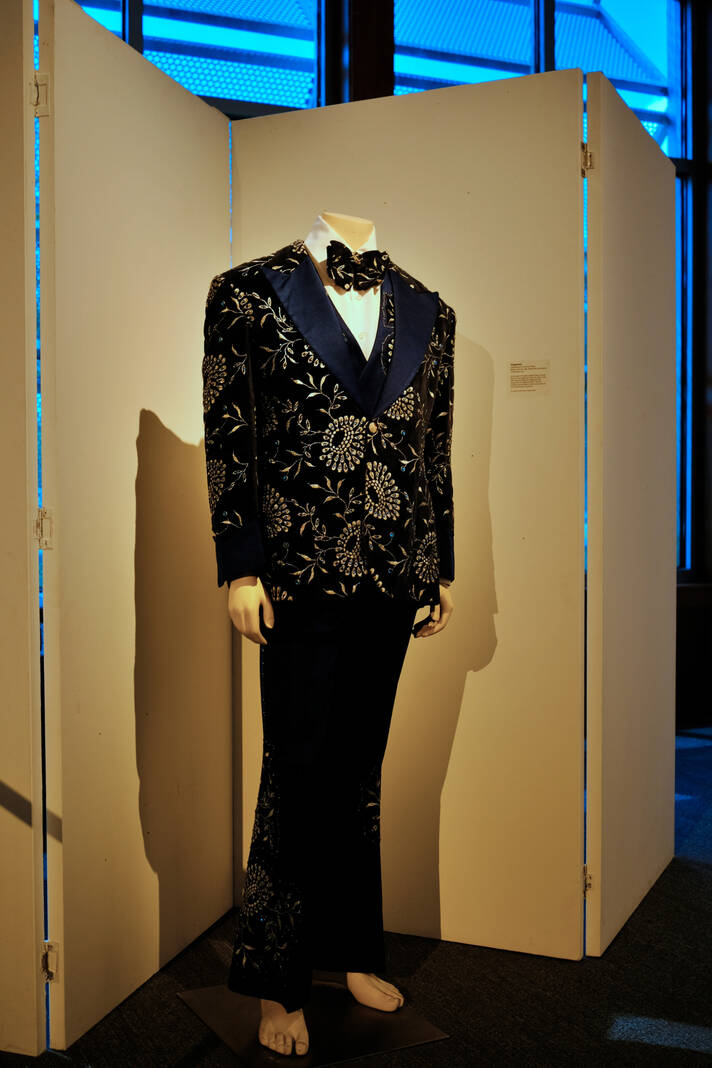
The exhibit spanning 5,000 square feet showcases Huerta’s treasured artifacts and memorabilia, including Fender’s 1952 Harley-Davidson Panhead motorcycle, a Fender Telecaster guitar and a Fender Duo Sonic guitar, three Grammy Awards and three gold records, along with his prized belt buckles.
Across five decades, the acclaimed tenor rode his career to the top of the pop, country and Tejano charts and onto the silver screen in the 1988 film “The Milagro Beanfield War,” while singing the haunting title track in the 1982 film “The Border.”
“Freddy gave his life to music,” Huerta said. “Instead of being home with his family, he was on the road, and I was able to let him go — because when he was on stage, he was another person. It just lit him up. He became music.”
Throughout his career, Fender was breaking down barriers.
“He did so much for music, but also for everyone around him,” Huerta said. “On top of that, he endured so much in terms of what it took to become the first Mexican-American artist to break through across so many genres.”
On June 4, 1937, Baldemar Garza Huerta was born to Serapio and Margarita Garza Huerta, the oldest of nine children.
In San Benito, he grew up behind 550 Biddle St., his home was razed long ago.
By the time he was 7, he was helping his family, shining shoes in bars.
On hot summer days, he’d cool off in the resaca across the street from home.
In La Palma barrio, Joe Mendez, his youngest brother, sparked Fender’s love of motorcycles.
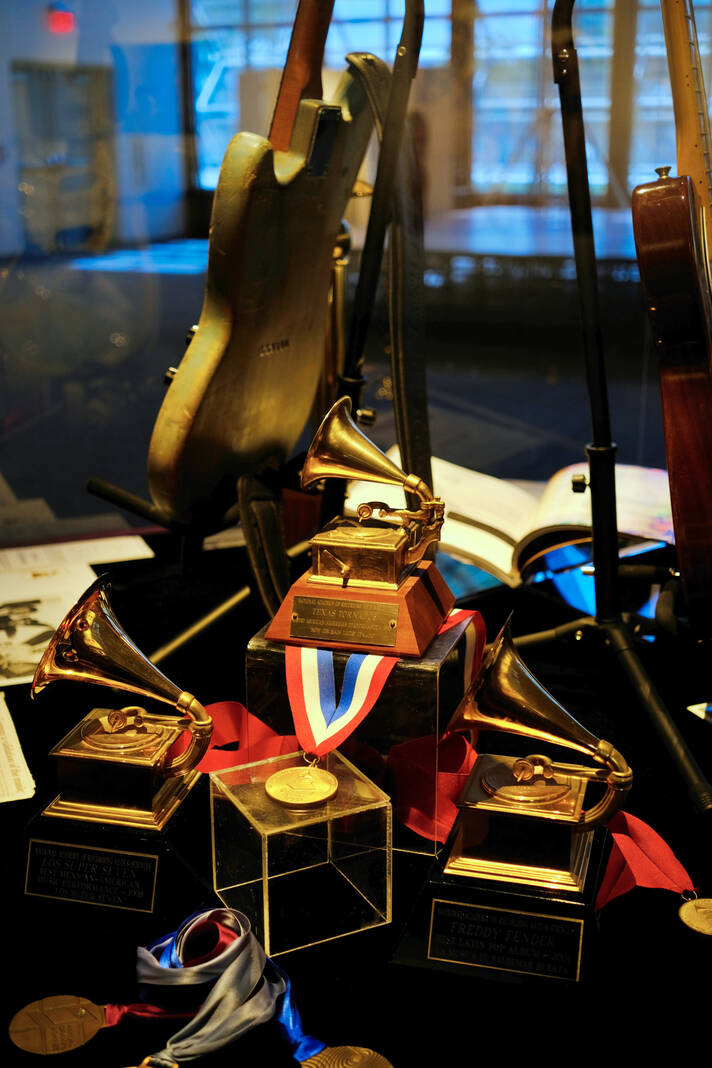
“We had a motorcycle club — the Border Diablos,” Mendez, a retired route salesman who used to race motorcycles, said. “We partied here, we partied there. It created a brotherhood.”
In 1959, Fender broke into rock ’n’ roll history with his rousing classic “Wasted Days and Wasted Nights.”
“His career was like a rollercoaster,” Mendez said.
Throughout his career, Fender climbed over its lows, going on to reach higher peaks.
“He never gave up,” Mendez said.
In 1975, Fender reached the top of the country charts with his biggest hit, “Before the Next Teardrop Falls.”
At the same time, his re-recorded version of “Wasted Days and Wasted Nights” was climbing the charts.
By 1989, Fender was playing guitar with the Texas Tornados, a band that went on to become a Grammy Award-winning super group.
Ten years later, he was playing with Los Super Seven, a star-studded Grammy-winning group.
On television shows from the “Tonight Show” to “Austin City Limits,” Fender was putting San Benito on the map.
“Freddy never forgot where he came from,” Mendez said. “Every time he came out on TV, he’d mention he’s from San Benito.”
